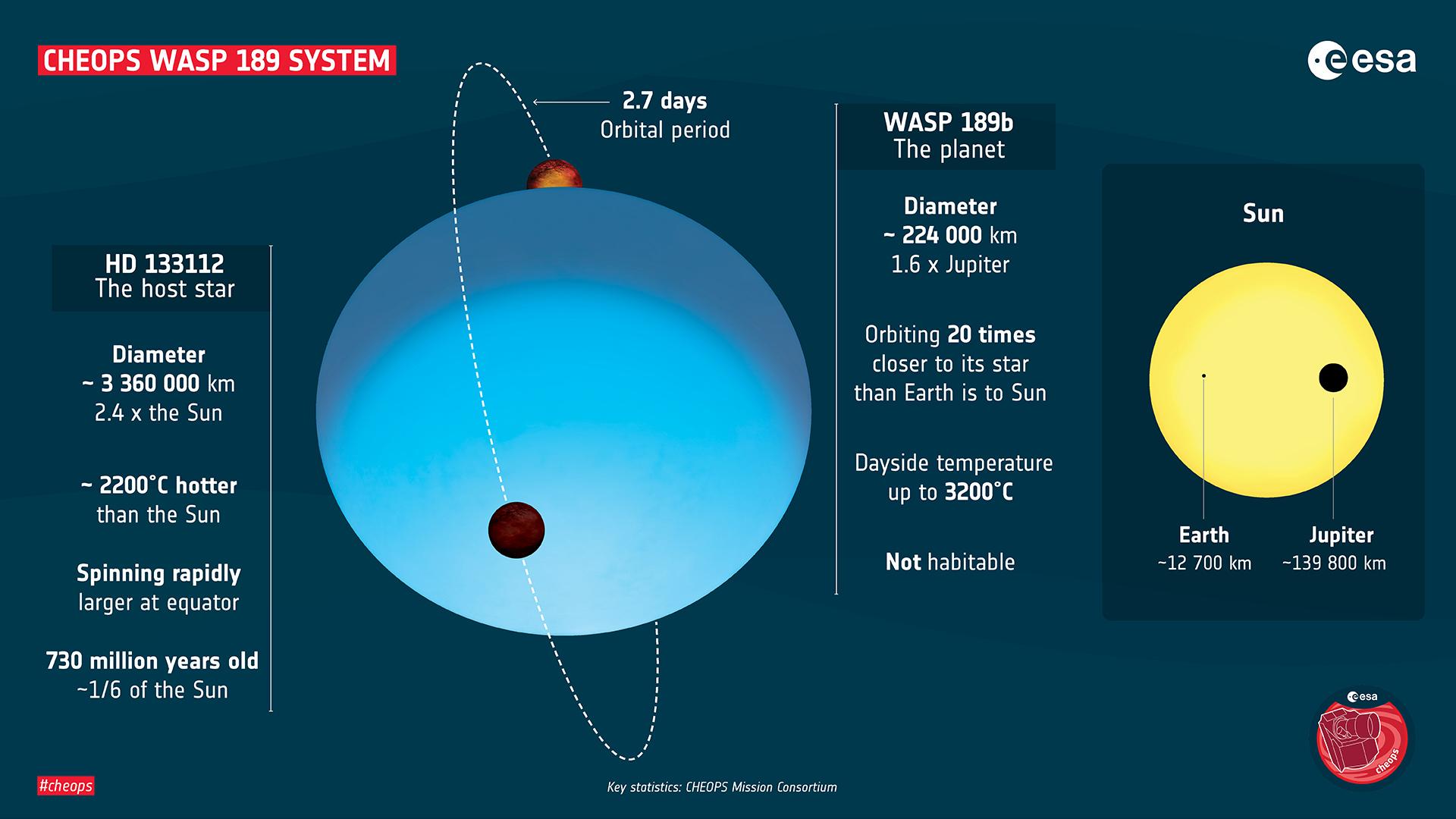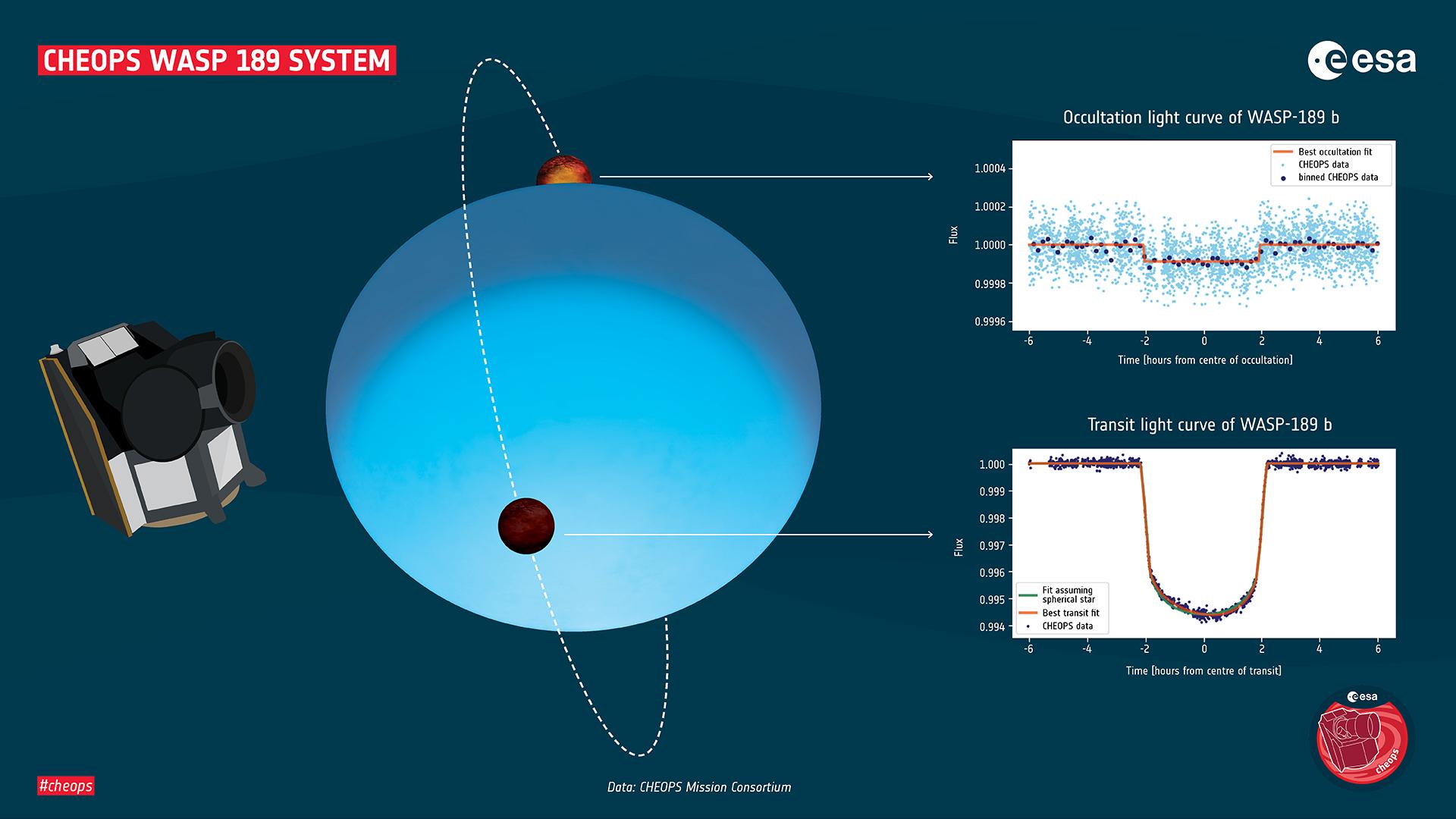Hotter than a star
WASP-189 b is a rather unusual planet. The gas giant was already discovered two years ago. Now researchers have discovered new details about it with the help of the CHEOPS satellite. Thus WASP-189b orbits its star 20 times closer than the earth the sun. For a complete orbit it needs only 2.7 days. Its home star is larger and over 2,000 degrees hotter than the Sun, which is why it appears to glow blue.
“We only know of a handful of planets that orbit around such hot stars. In addition, this system is by far the brightest we know of,” says Monika Lendl from the University of Geneva in Switzerland, lead author of the new study. “In addition, WASP-189 b is the brightest hot Jupiter that we can observe while it is in front of or behind its star. This makes the whole system extremely fascinating.”
First, Lendl and her colleagues used Cheops to observe WASP-189 b during an occultation, i.e. as the planet passes behind its home star. “Because the planet is so bright, the amount of light from this system actually decreases noticeably when it disappears from view for a moment,” explains Lendl. “We used this observation to determine the brightness of the planet and were able to set its temperature at a red-hot 3200 °C.”
This makes WASP-189 b one of the hottest and most extreme planets, which distinguishes it from all other planets in the solar system. At such high temperatures, even metals like iron melt and turn into gas. This makes the planet uninhabitable without a doubt.
Next, Cheops observed how WASP-189 b passed in front of his star – a transit. Transits can reveal much about the size, shape and orbital characteristics of a planet. This was the case with WASP-189 b, which, at almost 1.6 times the radius of Jupiter, was larger than previously thought.
“We also saw that the star itself is interesting – it is not perfectly round, but it is larger and cooler at its equator than at the poles, which makes the star’s poles appear brighter,” says Lendl. “It rotates so fast that it is pulled outwards at its equator! To this asymmetry is added the fact that the orbit of WASP-189 b is inclined; it does not orbit around the equator, but orbits close to the star’s poles”.
Such an inclined orbit contributes to the existing mystery of how hot Jupiter is formed. For a planet to have such an inclined orbit, it must have formed further out and then been pushed inwards. It is assumed that this happens when several planets within a system crowd around their position or when an external influence – for example another star – disturbs the system. “Since we have measured such an inclination with chops, this suggests that such interactions have occurred in the past at WASP-189 b,” explains Lendl.
Lendl and her colleagues used the high-precision capabilities of Cheops to unlock the secrets of WASP-189 b. Cheops opened his eye in January this year and began routine scientific operations in April. “This first result from Cheops is extremely exciting: it is early, definitive proof that the mission is delivering on its promise of precision and performance,” said Kate Isaak, Cheops project scientist at ESA.


